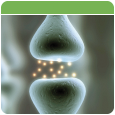Glucose-responsive insulin
Glucometers, insulin pens and insulin analogues marked a great leap forward in diabetes care in late nineties, especially for those who started to be treated with insulin in previous decades. Now, an insulin therapy of a new generation is emerging with "smart" insulin able to be released from depot dose in a glycemia-dependent manner. In a paper published in PNAS in the end of December 2014 a team from Boston Children’s Hospital (MA) and Massachusetts Institute of Technology lead by Robert Langer and Daniel G. Anderson describe an advanced technology based on covalent modification of insulin with aliphatic phenylboronic acid conjugates:
Significance
- Self-administered insulin is the most important therapeutic to provide control over blood glucose levels for patients with type-1 diabetes. However, standard insulin therapy introduces a number of complications and subsequent issues with control of blood glucose levels. Here, we prepared a derivative of insulin with a molecular switch to provide glucose-mediated activation of the insulin molecule, toward the generation of more autonomous therapy with improved blood glucose control. This modified insulin, when administered in a diabetic mouse model, restores blood glucose levels following a glucose challenge (i.e., a simulated meal) faster than both standard insulin and a clinically used long-lasting insulin derivative.
Abstract
- Since its discovery and isolation, exogenous insulin has dramatically changed the outlook for patients with diabetes. However, even when patients strictly follow an insulin regimen, serious complications can result as patients experience both hyperglycemic and hypoglycemic states
- Several chemically or genetically modified insulins have been developed that tune the pharmacokinetics of insulin activity for personalized therapy.
- Here, we demonstrate a strategy for the chemical modification of insulin intended to promote both long-lasting and glucose-responsive activity through the incorporation of an aliphatic domain to facilitate hydrophobic interactions, as well as a phenylboronic acid for glucose sensing. These synthetic insulin derivatives enable rapid reversal of blood glucose in a diabetic mouse model following glucose challenge, with some derivatives responding to repeated glucose challenges over a 13-h period.
- The best-performing insulin derivative provides glucose control that is superior to native insulin, with responsiveness to glucose challenge improved over a clinically used long-acting insulin derivative. Moreover, continuous glucose monitoring reveals responsiveness matching that of a healthy pancreas. This synthetic approach to insulin modification could afford both long-term and glucose-mediated insulin activity, thereby reducing the number of administrations and improving the fidelity of glycemic control for insulin therapy. The described work is to our knowledge the first demonstration of a glucose-binding modified insulin molecule with glucose-responsive activity verified in vivo.



